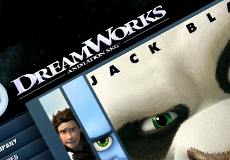By
Cassie PatonNovember 26, 2013
A team from Disney Research Zürich led by Wojciech Jarosz has developed a new rendering technique that is expected to save animators significant time in the editing process of feature films. The new computational algorithm, which is being presented at this week’s ACM SIGGRAPH Asia conference in Hong Kong, can reduce rendering times for scenes that are affected by light — like those with water and smoke — by a factor of up to 1,000. Continue reading New Animation Technology to Save Production Time and Cost
By
Rob ScottSeptember 5, 2013
Santa Clara, CA-based Assimilate has launched a free media player for visual effects artists, cinematographers and prosumers that supports Raw footage from digital cinematography and DSLR cameras. The new Scratch Play also supports formats such as OpenEXR and ProRes, providing digital imaging professionals and DSLR enthusiasts with the ability to review shots, pull stills, export CDLs or LUTs, and review animation at full resolution. Continue reading Scratch Play: Assimilate Launches Universal Media Player
The Visual Effects Society (VES), the industry’s professional honorary society, released “The State of the Global VFX Industry 2013,” a comprehensive strategic analysis of the business drivers impacting all sectors of the VFX industry working in film production and presentation of solutions to mitigate instability. Initial recommendations focus on improving business and financial management acumen among artists and facilities management through training programs and new standards and practices. Continue reading VES Publishes Analysis: The State of the Global VFX Industry
The Entertainment Technology Center @ USC will announce the launch of “Production in the Cloud” today, a new project that brings together key media and cloud-resource leaders to develop guidelines and accelerate innovation and adoption of next-gen cloud-based content creation, production, and distribution tools and processes. Senior executives from the six major studios in coordination with Rackspace, EMC, EVault, Dell and other cloud companies convened recently to serve as governing body to collectively guide this process. Continue reading ETC Announces Launch of Production in the Cloud Project
Animator and special effects pioneer Ray Harryhausen, 92, died on Tuesday in London, where he had been living. Harryhausen, an innovative artist whose work still inspires filmmakers, often played a principal role in the movies that featured his technical effects. “He frequently proposed the initial concept, scouted the locations and shaped the story, script, art direction and design around his ideas for fresh ways to amaze an audience,” according to The New York Times. Continue reading Media Industry Mourns the Loss of Pioneer Ray Harryhausen
By
Rob ScottApril 5, 2013
First announced at last year’s NAB, cloud-based production service Adobe Anywhere is scheduled to launch in May and will be on display at next week’s NAB (booth SL3910) in Las Vegas. The toolset enables collaboration for creative professionals using Adobe Premiere, After Effects and logging tool Prelude. It uses Adobe’s Mercury streaming engine, a server that streams relevant video frames and scales quality based on available bandwidth. Continue reading NAB 2013: Cloud-Based Production with Adobe Anywhere
By
Rob ScottApril 4, 2013
Sony announced it has entered the cloud-based services market with the launch of a new set of tools intended to help creative professionals such as production studios, filmmakers, producers, broadcasters and marketing teams work with various media applications online. The Ci scalable cloud platform features a “fast and secure” collection of tools for collecting, producing, sharing and archiving high-quality media content. Continue reading NAB 2013: Sony Announces New Scalable Cloud Platform
By
emeadowsMarch 19, 2013
Researchers at the Max Planck Institute for Informatics (MPII) have developed video inpainting software that can delete people or objects from high-definition video footage. How is it done? The software analyzes every video frame and calculates which pixels should replace a moving area that’s been marked for removal, explains Gizmag. The article provides an impressive video demonstration of the technology. Continue reading New Software Can Delete People or Objects from HD Video
By
emeadowsFebruary 28, 2013
Rhythm & Hues Studios, which served as the lead visual effects producer on the dazzling “Life of Pi” film, filed for Chapter 11 bankruptcy on February 13 — just days after the film won four prizes at the annual Visual Effects Society Awards and just weeks before it would win the Academy Award for best visual effects. Additionally, the 26-year-old company has laid off 254 of its 718 employees in the LA area. Continue reading Another Visual Effects Company Bankrupt: Time for Change?
By
Rob ScottFebruary 21, 2013
During this week’s Hollywood Post Alliance Tech Retreat in Indian Wells, California, industry veterans are discussing the transition to digital cinema and what that means for the future of production, distribution and exhibition. “The industry has spent more than $3 billion… and by the end of this year I predict we will be releasing movies in the U.S. without any film prints,” said Jerry Pierce, chairman of the Inter-Society Digital Cinema Forum. Continue reading HPA Tech Retreat: Digital Cinema Opens New Possibilities



